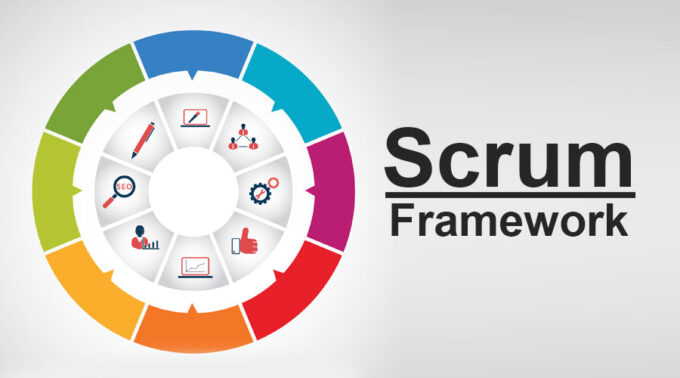If you have ever worked on the product on software development, for sure you must have heard about Scrum. This framework, designed for teams that build and iterate quickly, has gained immense popularity in the IT industry. Currently, over 70% of software companies use Scrum as their primary means of operation. Product managers keep saying that Scrum can help you work together to solve complex problems. Let’s dive deeper into what Scrum is, including how it works and what the pros and cons of Scrum are.
If you have ever worked on the product on software development, for sure you must have heard about Scrum. This framework, designed for teams that build and iterate quickly, has gained immense popularity in the IT industry. Currently, over 70% of software companies use Scrum as their primary means of operation. Product managers keep saying that Scrum can help you work together to solve complex problems. Let’s dive deeper into what Scrum is, including how it works and what the pros and cons of Scrum are.
What is Scrum?

Source: educba.com
Scrum is a development methodology used in the development of software. The methodology is based on iterative and incremental processes. The main goal of Scrum is to satisfy the client’s needs through transparency in communication and continuous progress. The whole idea behind Scrum starts from a concept on what must be built, with a very specific list of characteristics ordered by priority. Simply speaking, Scrum is a better way of building products. You are able to address complex problems, while productively and creatively delivering products of the highest possible value.
The Scrum methodology has been developed to increase a company’s output in the most efficient way possible. The whole idea is to utilize all available resources efficiently to drive optimal results. It replaces a programmed algorithmic approach with a heuristic one. Traditionally, Scrum is run in a sprint. Sprints are usually 2-week long working sessions with specific milestones to achieve at the end. As the Scrum framework has an iterative approach, it helps improve the product and deliver maximum value to the end-user.
How Scrum works
As mentioned above, the Scrum framework relies on a system of continuous improvement. All processes can be adjusted based on the information you gain during the sprint. Scrum ‘consists of’ the following events:
- Organizing backlog – to start the sprint, the team must identify what work to pull from the product backlog. Shortly speaking, it is deciding what must be done.
- Sprint planning – when you organize your backlog, time to decide what you will be focusing on.
- Start your sprint – usually, a sprint is 2 weeks long. However, there are shorter and longer sprints, depending on what works best for your team. The sprint means working on the items from the backlog that has been outlined during the sprint planning session.
- Daily standups – according to the Scrum practices, the team should meet every day for around 15 minutes. During standups, team members will share what they are working on and discover unexpected blockers they may have run into.
- Sprint reviews – when the sprint is finished, the Scrum team members should have a chance to present the work that has been done.
- Sprint retro – the sprint retrospection is the time to discuss how the sprint went and what could be improved in the future.
While talking about how Scrum works, we cannot forget about Scrum values. If you follow Scrum, you are expected to learn commitment, courage, focus, openness, and respect.
Scrum roles and principles

Source: obukeikursevi.com
The Scrum methodology prescribes three specific roles:
- Product owner – a person responsible for what the team is building and why. The product owner is in charge of the product backlog. They are connected to the user’s needs and bring clarity about what is most important to deliver next.
- Scrum master – a person whose role is to ensure the Scrum process is followed by the team. It’s like a combination of coach, team member, and supporter. Scrum master runs the various. You can click here to get more information about this.
- Scrum events and facilitates daily standups, as well as hosts the sprint planning, review, and retro meetings.
- Scrum team – people who actually build the product, everyone who is working on the sprint.
The empirical nature of Scrum can be underpinned by the principles described below.
-
Transparency
While working in Scrum, each member of the Scrum team should be aware of what issues other team members are running into.
-
Collaboration
The greatest successes are achieved when the team is working together, believing in a common goal. You can only deliver the best results if your team works together during and after the sprint.
-
Iterative development
Scrum means building iteratively. This way, the Scrum team can adapt to customer needs and modify the product and the outputs based on value-based prioritization. Remember, in Scrum, the first product is never perfect.
-
Self-organization
Each member of the Scrum team is empowered to take ownership of their work and tasks. According to the Scrum methodology, the shared ownership means more dynamic and creative teams.
Should your team use Scrum? Pros and cons of the Scrum methodology
Scrum has become more and more popular in the IT industry, and at Accesto we use it for all our projects. But it isn’t for everyone. As with everything, Scrum has its pros and cons.
The pros of Scrum

Source: insights.dice.com
The methodology can help teams complete projects quickly and efficiently. It ensures effective use of time and money. Time and financial resources can be utilized efficiently as finances are budgeted before the project starts. Such an approach helps in eliminating unexpected expenses and lapses in time. The product is thoroughly tested at the end of each sprint so that the team can track any possible flaws and fix them. Another thing is that Scrum breaks down bigger tasks into smaller and more workable parts which makes projects more achievable. Developments are tested during the sprint review and the team gets clear visibility through Scrum meetings. Teams that follow the methodology and its practices can easily benefit from agility and flexibility. Summing up, the Scrum framework can help you hit your goals more effectively.
The cons of Scrum

Source: dootrix.com
Of course, Scrum also has some limitations. Firstly, as the framework and Scrum projects don’t have a definite timeline and work based on each sprint, some projects may last much longer than they are supposed to. If there are too many changes, your team may iterate over and over without any results. The Scrum framework is continuous improvement, after all, and this may turn out to be a disadvantage. The next thing is that Scrum can sometimes be difficult to implement, especially when the team is not trained and educated enough. Scrum works best if the team is small (4-6 team members) – the bigger the team, the more problems with communication can occur. Finally, the chances of project failure are relatively high when individual team members aren’t cooperative or committed enough.







